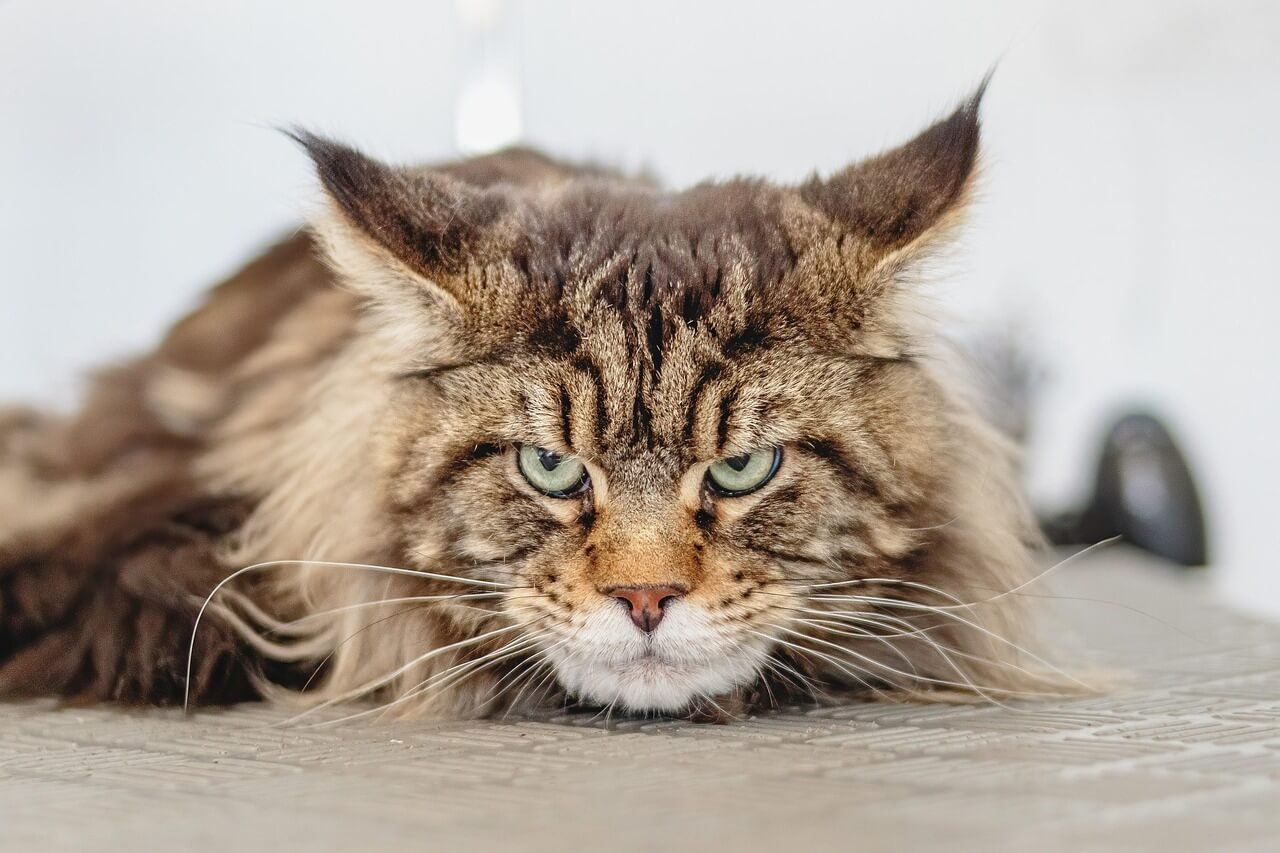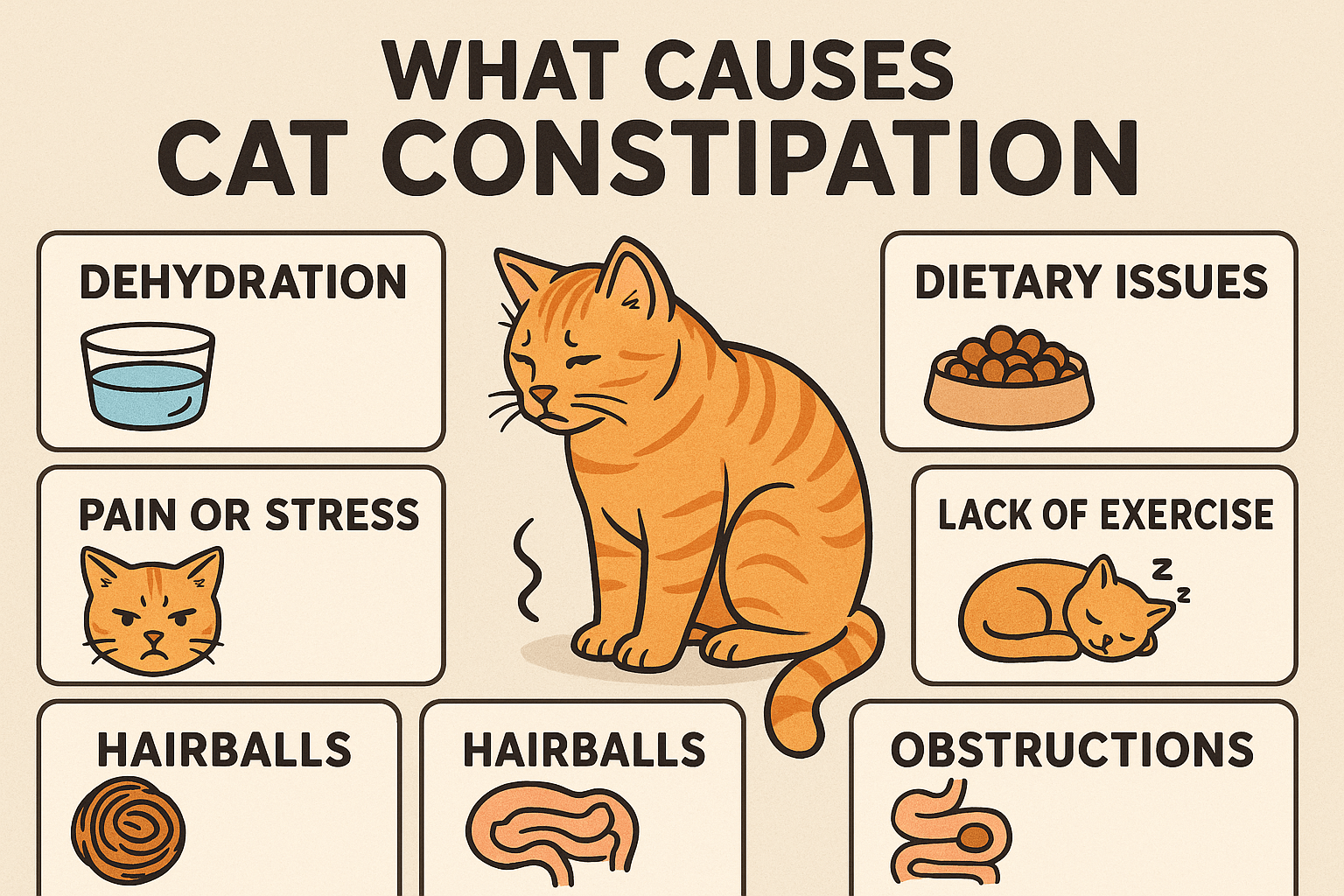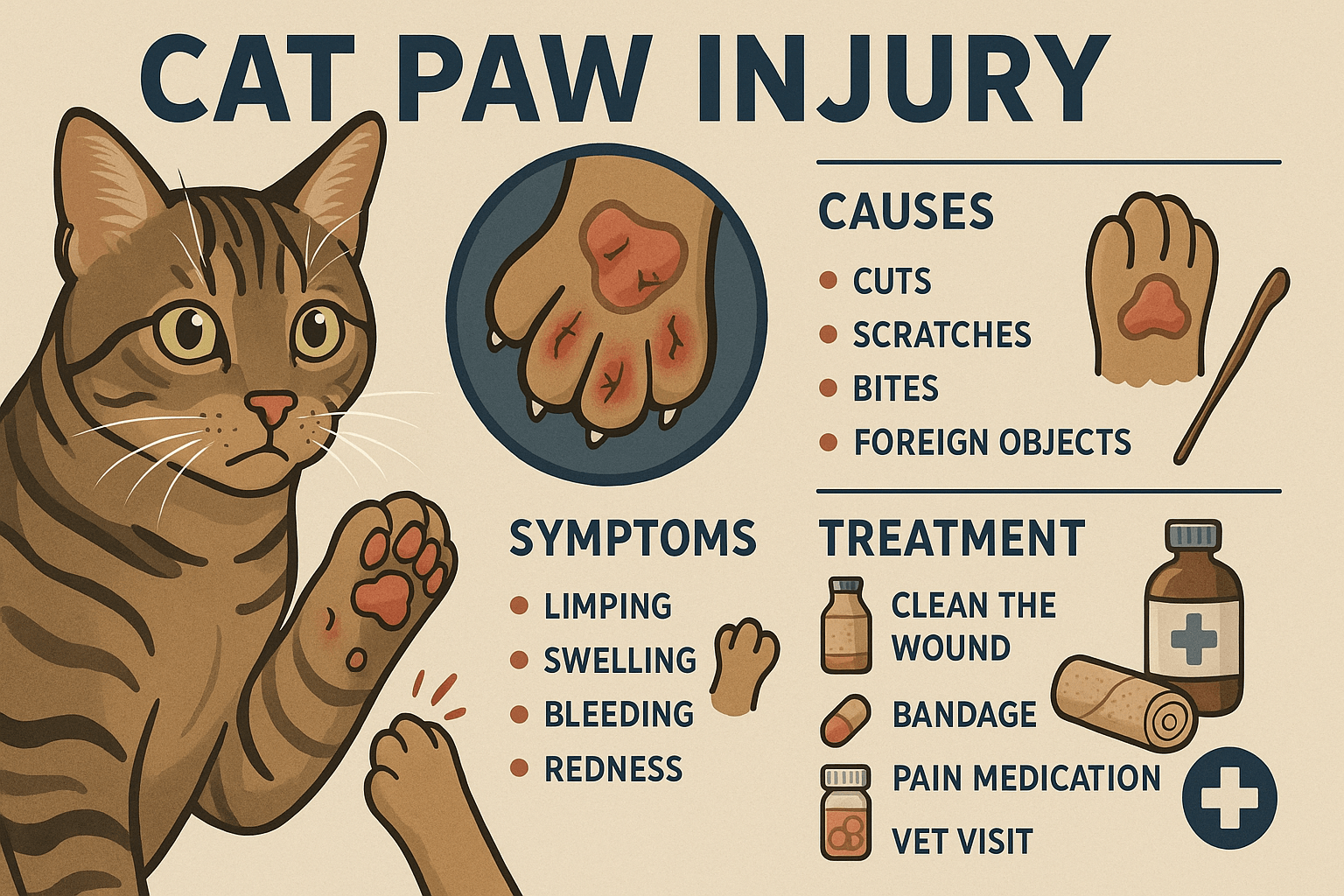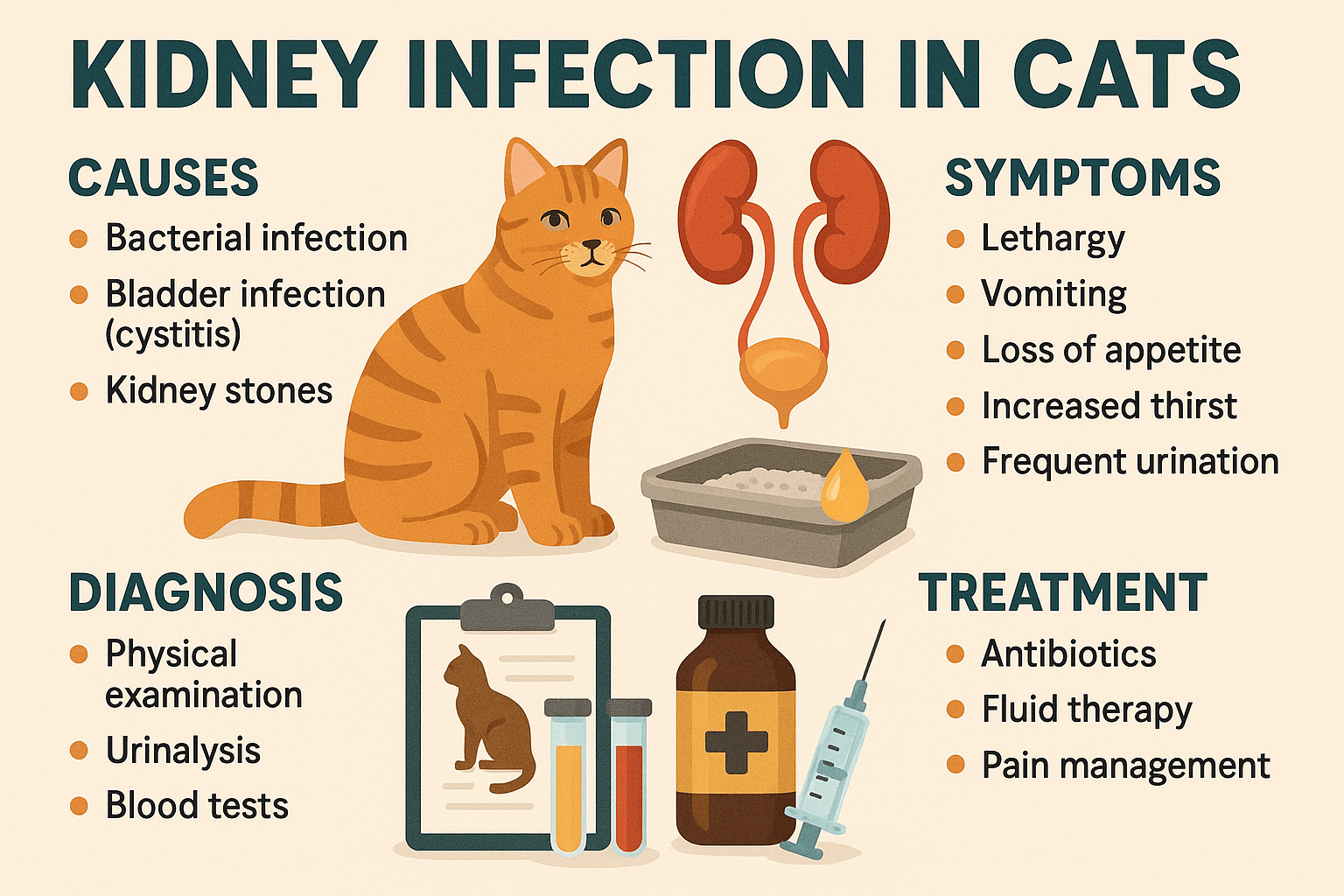Understanding Cat Paw Burns: Causes, Symptoms, and Treatment
Cats are naturally curious creatures, and their paws are their primary tools for exploring the world. Unfortunately, this adventurous nature can sometimes lead to injuries, such as cat paw burns. Whether it’s from walking on a hot surface, exposure to chemicals, or even frostbite, paw burns can be painful and distressing for your feline friend. As a responsible pet owner, it’s important to recognize the signs of paw burns, understand their causes, and know how to provide proper care. In this blog post, we’ll explore everything you need to know about cat paw burns, including prevention tips, treatment options, and ways to keep your furry companion safe. Let’s dive in and ensure your cat’s paws stay healthy and happy.
Common Causes of Cat Paw Burns
Cat paw burns can occur in various ways, often due to environmental hazards or accidents. Understanding the common causes can help you take preventive measures. Here are some of the most frequent culprits:
Hot Surfaces
Walking on hot pavements, asphalt, or metal surfaces during summer can cause thermal burns to your cat’s sensitive paw pads.Chemical Exposure
Household cleaners, fertilizers, or other chemicals left on surfaces can irritate or burn a cat’s paws if they come into contact.Electrical Burns
Chewing on electrical cords or appliances can lead to severe burns, particularly on the mouth and paws.Cold Weather
Prolonged exposure to freezing temperatures or icy surfaces can result in frostbite, a type of cold-related burn.Friction Burns
Rough play or sliding on abrasive surfaces can cause friction burns on your cat’s paws.
By being aware of these potential dangers, you can take steps to minimize risks and protect your cat’s delicate paws. Prevention is always better than dealing with the aftermath of an injury.
Signs Your Cat May Have a Paw Burn
Recognizing the symptoms of a paw burn early is crucial for prompt treatment. Cats are masters at hiding pain, so it’s important to observe their behavior closely. Here are some signs that may indicate your cat has burned their paws:
Limping or Favoring One Paw
If your cat is avoiding putting weight on a specific paw, it could be a sign of discomfort or injury.Excessive Licking or Chewing
Cats often lick or chew at painful areas, which can exacerbate the injury if not addressed.Redness or Swelling
Inflamed or swollen paw pads are clear indicators of irritation or a burn.Blisters or Peeling Skin
Severe burns may cause blisters or peeling skin on the paw pads, requiring immediate attention.Unusual Behavior
Hiding, vocalizing more than usual, or acting restless can signal pain or discomfort in your cat.
If you notice any of these signs, it’s essential to examine your cat’s paws carefully and consult a veterinarian if needed. Early intervention can prevent complications and speed up recovery.
Check this guide 👉Understanding Cat Paw Abscess: Best 7 Health Tips!
Check this guide 👉Understanding Cat Paw Injuries: Best 7 Health Tips!
Check this guide 👉Understanding Cat Paw Yeast Infections: Best 7 Health Tips!

Causes of Cat Paw Burns | Signs of Cat Paw Burns |
|---|---|
Hot surfaces (pavement, asphalt) | Limping or favoring one paw |
Chemical exposure | Excessive licking or chewing |
Electrical burns | Redness or swelling |
Cold weather (frostbite) | Blisters or peeling skin |
Friction burns | Unusual behavior (hiding, restlessness) |
First Aid for Cat Paw Burns
If you suspect your cat has burned their paws, providing immediate first aid can help alleviate pain and prevent further damage. Here are some steps to follow:
Cool the Burn
Gently rinse the affected paw with cool (not cold) water for 10–15 minutes to reduce heat and soothe the area.Remove Debris
Carefully check for and remove any dirt, glass, or debris lodged in the paw, using tweezers if necessary.Apply a Saline Solution
Use a sterile saline solution to clean the area and prevent infection without irritating the skin.Avoid Home Remedies
Do not apply oils, butter, or creams, as these can trap heat and worsen the burn.Bandage the Paw (if needed)
For minor burns, loosely wrap the paw with a clean, non-stick bandage to protect it while healing.
These first aid steps can provide temporary relief, but it’s important to seek veterinary care for severe burns or persistent symptoms. Professional treatment ensures your cat receives the best possible care.
Preventing Cat Paw Burns: Practical Tips
Prevention is key to keeping your cat’s paws safe from burns. By taking proactive measures, you can minimize the risk of injury. Here are some practical tips:
Test Outdoor Surfaces
Before letting your cat outside, place your hand on surfaces like pavement or metal to check if they’re too hot or cold.Use Pet-Safe Cleaners
Opt for non-toxic cleaning products and store chemicals out of reach to avoid accidental exposure.Cover Electrical Cords
Use cord covers or deterrent sprays to prevent your cat from chewing on electrical wires.Provide Shelter in Extreme Weather
Ensure your cat has access to shade in summer and warmth in winter to protect their paws from temperature extremes.Trim Paw Hair Regularly
For long-haired cats, trimming the fur between their toes reduces the risk of debris getting stuck and causing irritation.
By implementing these preventive measures, you can create a safer environment for your cat and reduce the likelihood of paw burns. A little effort goes a long way in ensuring their well-being.
Common Mistakes to Avoid When Treating Cat Paw Burns
When treating a cat paw burn, even well-meaning pet owners can make mistakes that may delay healing or worsen the injury. Avoiding these common errors is crucial for ensuring your cat’s recovery. Here are some pitfalls to watch out for:
Using Ice Directly on the Burn
Applying ice directly to a burn can cause further damage to the sensitive tissue and lead to frostbite.Ignoring Signs of Infection
Failing to monitor the paw for signs of infection can result in complications that require more intensive treatment.Forcing Your Cat to Walk
Encouraging your cat to walk on an injured paw too soon can aggravate the burn and prolong healing.Skipping Veterinary Care
Assuming minor burns don’t need professional attention can lead to untreated issues that worsen over time.Using Human Pain Relievers
Medications like ibuprofen or acetaminophen are toxic to cats and should never be administered without veterinary guidance.
By avoiding these mistakes, you can ensure your cat receives the best possible care and minimize the risk of complications. Always prioritize professional advice when in doubt.
Long-Term Effects of Untreated Cat Paw Burns
If left untreated, cat paw burns can lead to serious long-term consequences that affect your cat’s mobility and overall health. Understanding these risks underscores the importance of timely intervention. Here are some potential long-term effects:
Chronic Pain
Untreated burns can heal improperly, leaving scar tissue that causes ongoing discomfort for your cat.Infections That Spread
An untreated burn can become infected, potentially spreading to other parts of the body and causing systemic illness.Lameness or Mobility Issues
Severe burns may damage the paw pads permanently, leading to difficulty walking or lameness.Behavioral Changes
Chronic pain or discomfort from untreated burns can make your cat more irritable or withdrawn over time.Increased Vulnerability to Other Injuries
A compromised paw makes it harder for your cat to escape danger or navigate their environment safely.
These potential outcomes highlight the importance of addressing paw burns promptly. Early treatment not only alleviates immediate pain but also prevents long-term issues that could impact your cat’s quality of life.
Fun Facts About Cat Paws and Their Importance
Cat paws are fascinating and play a vital role in your feline friend’s daily life. Learning more about them can deepen your appreciation for how incredible these small yet essential body parts are. Here are some fun facts about cat paws:
Paws Are Sensitive Sensors
Cats’ paw pads are packed with nerve endings, allowing them to detect vibrations, textures, and temperature changes.Paws Help with Temperature Regulation
Sweat glands located in a cat’s paws help regulate body temperature, especially during hot weather.Paws Act as Shock Absorbers
The soft padding on a cat’s paws cushions their movements, enabling silent stalking and high jumps.Each Paw Is Unique
Just like human fingerprints, every cat’s paw pad has a unique pattern, making them one of a kind.Paws Are Essential for Grooming
Cats use their paws to assist in grooming, often licking them and using them to clean hard-to-reach areas.
These amazing facts remind us just how important it is to protect your cat’s paws from harm. By understanding their anatomy and function, we can better appreciate why keeping their paws healthy is so vital.
Frequently Asked Questions About Cat Paw Burns
Can cats recover from paw burns?
Yes, most cats recover fully from paw burns with proper care and treatment, though severe cases may take longer to heal.
Should I take my cat to the vet for a paw burn?
If the burn is severe, covers a large area, or shows signs of infection, it’s best to consult a veterinarian promptly.
How can I tell if my cat’s paw burn is infected?
Signs of infection include pus, foul odor, increased redness, swelling, or worsening pain around the affected area.
What should I do if my cat’s paw burn blisters?
Avoid popping blisters and seek veterinary care, as they may require professional treatment to prevent infection.
Can I use over-the-counter ointments on my cat’s paw burn?
No, many human ointments are toxic to cats. Always consult your vet before applying any medication.
Keeping Your Cat’s Paws Safe and Healthy
Cat paw burns are a painful but preventable issue that every pet owner should be aware of. By understanding the causes, recognizing the symptoms, and knowing how to respond, you can ensure your cat receives the care they need when accidents happen. Taking preventive measures, such as testing surfaces and using pet-safe products, can go a long way in protecting your feline friend’s delicate paws. Remember, your cat’s paws are their connection to the world—keeping them healthy is an act of love and responsibility. With vigilance and compassion, you can help your cat enjoy a life full of comfort and adventure, free from unnecessary pain.
What Causes Cat Constipation? Best 7 Expert Tips! Discover common causes, symptoms, and solutions for cat constipation to keep your feline healthy and comfortable.
Cat Paw Injury: Best 7 Expert Tips! Discover essential advice on identifying, treating, and preventing cat paw injuries to keep your feline friend healthy and happy.
Kidney Infection in Cats: Best 7 Expert Tips! Discover essential advice on recognizing symptoms, treatment options, and preventive care to keep your cat healthy and thriving.
Siamese vs Burmese Cat: Best 7 Expert Tips! Discover key differences in personality, appearance, and care to choose the perfect feline companion for your lifestyle.





